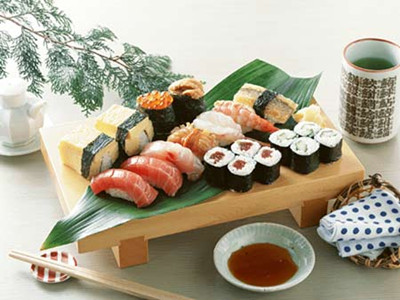
Sushi has a very interesting origin that has lasted for centuries and continues to be a very popular food today. Sushi is made with a combination of shellfish, cooked or raw fish, vegetables, and seasoned rice. Although Sushi is most commonly linked to the Japanese heritage, it actually began in China during the 7th Century.
At that time, any fish caught had to be preserved. The only method possible was by fermentation. Raw fish was cleaned, filleted, and then pressed between layers of heavy salt and usually weighted down with some type of stone. The fish would remain this way for weeks at which the stone would be removed and then replaced with some type of light cover. The fish would stay in the salt layers for a couple of months until the fermentation process was complete.
Over time, a discovery was made that by rolling the fish in rice that had been soaked in vinegar the fish was fermented in a matter of days rather than months. The rice was then tossed out and the fish eaten. However, with drought and a food shortage, people began consuming the rice as well as the fish and thus, Sushi as we know it today was born.
However, in the 1800s, a famous chef by the name of Yohei was planning a large dinner party. Finding that he had not set out enough fish to serve his guests, he took a piece of fish from the freezer that had not been fermented and decided to take his chances in serving it. What he found was that frozen fish actually retained their flavor and any bacterium was killed. From this discovery, Yohei created two styles of Sushi —one called Edo, and the second, Osaka, for the city.
Sushi is usually consumed with hot green tea. Gari (thin slices of vinegar pickled ginger root) is offered free and eaten between bites to freshen the palate. Two kinds of sauces are usually available: one is soy sauce, which is poured on most kinds of sushi; the other is a thick sweet sauce used on eel. Wasabe (hot, green Japanese horseradish) can be added to make it spicier.
Sushi has taken the world by storm and today is a multi-billion dollar industry. The popularity of Sushi continues to rise in that people are looking for healthy food that is quick and easy to make.
With such incredible popularity as well as the health benefits of eating Sushi, it is likely that this food will continue to be a part of everyday life for many more centuries to come.












